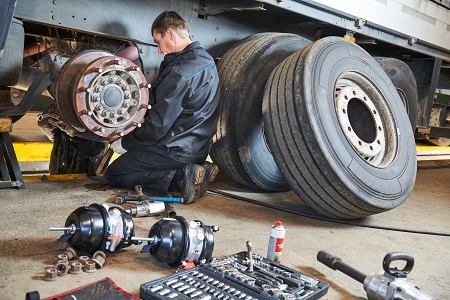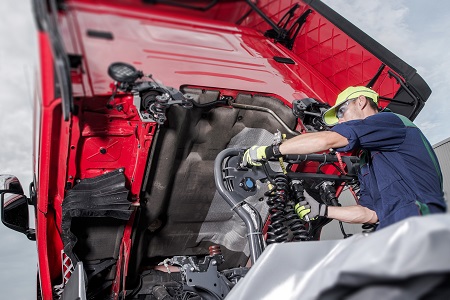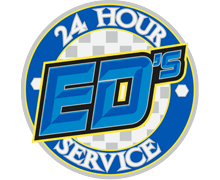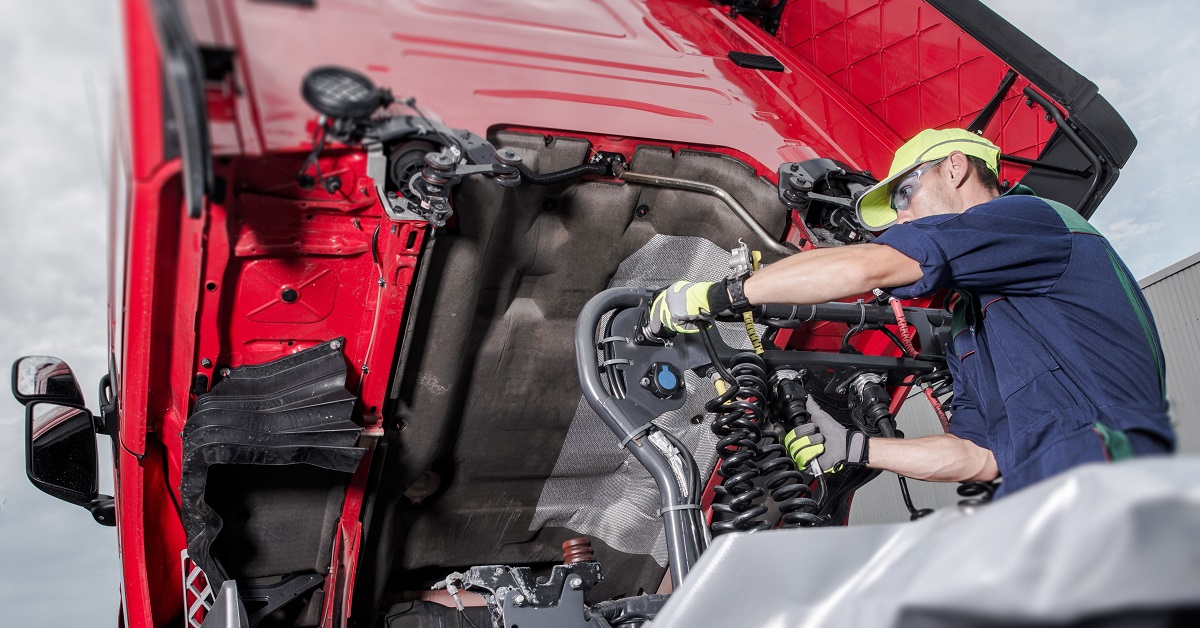Your truck is one of the most important assets you have. The more reliably it gets you from point A to point B, the more reliably comes the paycheck. There are signs that your truck needs maintenance, and the signs can be patricular to each type of truck model. Ed’s 24 Hour Service is here to show you signs of wear and tear on your truck that indicate when it is time to take it in for checkup or repair. Let’s get started.
Truck Maintenance 101: Always Read The Owner’s Manual
Before starting, it’s important to remember that most of these maintenance issues have a timeline and that you can find manufacturer’s recommendations for what needs regular maintenance and when inside your owner’s manual. The signs of wear and tear on your semi-truck’s components will vary depending on the component and model. While there are standard service checks, sometimes a particular part will require its own specialized maintenance schedule (brakes, pistons, belts, et cetera). It’s important to know and understand these thresholds to avoid thousands of dollars in engine damage.
Dashboard Lights
Something to consider are the maintenance reminder lights on the dashboard. Knowing what your dashboard lights mean is a lesson in basic repetition, but this leads to a paradox wherein the better shape you keep your vehicle in, the less likely you are to recognize the dashboard lights before the vehicle begins to suffer. Here’s a list of common dashboard lights for semi trucks:
- Engine Warning
- Engine Oil Pressure
- Engine Oil Level
- Coolant Level
- Brake Pressure
- Tire Pressure
- Voltage Warning
- Transmission Warning
- Airbags and Seatbelts


While some symbols are universal, every vehicle has a couple distinctions when displaying warning lights. In this case the owner’s manual is your good book for dog earring what particular symbols mean.
Mileage
Most automotive manufacturers recommend servicing your vehicle after a certain threshold of miles between services. There are usually two different thresholds based on “normal” or “severe” service schedules. Severe service schedules are for vehicles with the following characteristics, per AAA:
- Primarily short trips (5 miles or less)
- Extremely hot, cold, or dusty climates
- Sustained stop-and-go driving
- Carrying heavy loads or towing a trailer.
Obviously, that last one lumps truck drivers into a severe service schedule–but with good reason. Truck accidents can be horrific affairs with high death tolls and extensive damage. Keeping a tight leash on maintenance can prevent components from falling into disrepair and failing, as mechanics will be able to spot the issues much sooner.
Oil change intervals are a prime example of varying thresholds for vehicles. Because it it hard to tell oil condition by color, some manufacturers recommend changing oil every 3,000 miles for severe service schedules. However, most modern engine oil fabricators estimate a range between 5,000-7,500 miles while others report that full-synthetic motor oil can last up to 15,000 miles (although your oil filter probably won’t thank you). It’s up to you to come up with an oil change service schedule based on these recommendations.
Leaking Fluids
Speaking of oil changes, a leaky engine is a no-go. You might not just be leaking oil, however. Leaking compressed air, power steering, transmission, and engine coolant fluids presents other signs that your truck desperately needs maintenance. Your engine’s power might be greatly diminished, and you could even experience stalling and other major issues.
- A leak of motor engine oil will cause your truck to use more fuel and could even lead to major engine trouble because of increased friction on the mechanical parts.
- A leak of compressed air might cause increased stopping distances and less ability for your truck to stop quickly. This can create dangerous situations at high speeds.
- A leak of transmission fluid will cause signs such as increased engine temperature, harder gear changes, and increased fuel consumption. No fluid means both an automatic transmission or manual transmission will struggle to even start.
- A leak of the hydraulic fluid in the power steering system can cause signs such as wear of the pump belt as well as a loss of control in the steering wheel.
- A leak of engine coolant system can cause the engine to overheat and result in an increased need for antifreeze and coolant flushes.
Make sure you know your fluid levels before setting of on the next job to prevent unnecessary engine wear.
Worn Engine Bay Belts
If you are hearing chirps and squeals, suffering a sudden system performance loss or have a check engine light glaring at you, it might be time to check the belts in the engine bay. The most common belts in an engine bay include serpentine belts, drive belts and timing belts.


- Serpentine belts control a variety of components including the alternator, power steering pump, water pump, crankshaft and air conditioning compressor.
- Drive belts are essentially serpentine belts localized to particular systems. Whereas a serpentine belt is all-in-one, drive belts (also called v-belts) might number two-to-three. Which belts you have depends entirely on the engine.
- Timing belts control the “interference” engine most cars operate with nowadays. An interference engine just means that because the engine runs at tight intervals and certain parts performing a job can obstruct others from doing their own. Timing belts synchronize the crankshaft and camshaft to prevent this from happening.
You will want to check them at every mechanical service because of how important these components are. Mercifully they all have a similar lifespan: it is recommended they are checked in at every 60,000 miles and replaced every 90,000 miles.
Low Fuel Efficiency
One of the signs your truck needs maintenance is low fuel economy. A semi-truck will get anywhere from six to nine miles per gallon in city driving and up to 11 on highways, but if you are losing power or constantly need trips to the gas station then it might be time for some maintenance.
You can buy a variety of kits to test your engine’s fuel economy, but if you have a truck equipped with an electronic on-board computer (EOBC), the dashboard will display how much gas you are using per mile.
Vehicle Exhaust Colors
Hazard signs are when your truck’s exhaust pipe is illuminated with a color other than white. Emissions from the semi-truck, big rig or eighteen wheeler come out of the engine as a blue flame and should be a thin white in color from the expelled water vapors.
There are other color smokes to consider. Thicker white-gray exhaust indicates a leaking head gasket. Blue or gray exhaust means you might have an oil leak. Black exhaust means a blocked manifold, clogged engine air filter or malfunctioning fuel injection system is the likely culprit. In all cases, you will need to have the truck repaired lest the engine overheat and suffer truly catastrophic damage.
Braking Issues
Another signs your truck needs maintenance are brake issues. The most common types of brakes for semi trucks include drum brakes or disk brakes. Drum brakes are found at the rear of semi-trucks and big rigs while disk brakes can be found both up front or in back.
In any case, signs that your truck is having braking issues include a grinding noise from engaging the brake pads, loss of power steering to the wheels, difficulty with acceleration or stopping on hills. It’s time to get your truck checked.
24 Hour Mobile Roadside Assistance for Hancock County
If you’re a truck driver, it’s important to know the signs that something is happening inside your vehicle and when it should be taken in for a maintenance visit. With a 50 miles service radius, Ed’s 24 Hour Service can help with any roadside assistance issues near Hancock County, Ohio until you can take your big rig into the shop. We even have our own auto repair shop so we’ll be able to address more serious problems without having to tow their vehicle somewhere else. Contact us anytime of day–we won’t sleep until all of your trucking needs are met!

